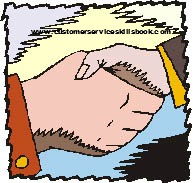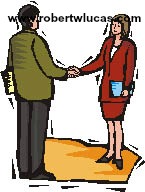Three Customer Relationship Building Tips
Building effective customer relationships are crucial to creating and maintaining customer loyalty. Every member of an organization should be continually looking for ways that they individually can enhance the bond between customers and service providers. These efforts can lead to enhanced customer and brand loyalty.
The following are three simple tips that anyone can use to better manage customer relationships and build stronger levels of trust.
- If you seek trust; communicate it through your words and nonverbal cues.
- Always act in the best interest of your customers. Listen to them, ask questions, anticipate their needs, deliver what you promise, and exhibit high levels of professionalism in everything that you do whether your customers are present or not.
- Take the time to personalize your customer interactions and to make each customer feel special. Use a customer’s name often during an interaction, listen, smile, ask questions to show interest and strive to project a positive image. This can all lead to enhanced trust and helps ensure that the customer returns.
About Robert C. Lucas
Bob Lucas has been a trainer, presenter, customer service expert, and adult educator for over four decades. He has written hundreds of articles on training, writing, self-publishing, and workplace learning skills and issues. He is also an award-winning author who has written thirty-seven books on topics such as, writing, relationships, customer service, brain-based learning, and creative training strategies, interpersonal communication, diversity, and supervisory skills. Additionally, he has contributed articles, chapters, and activities to eighteen compilation books. Bob retired from the U.S. Marine Corps in 1991 after twenty-two years of active and reserve service.
Make Money Writing Books: Proven Profit Making Strategies for Authors by Robert W. Lucas at Amazon.com.
The key to successfully making money as an author and/or self-publisher is to brand yourself and your company and to make yourself and your book(s) a household name. Part of this is face-to-face interaction with people at trade shows, library events, book readings, book store signings, blogging or guest blogging on a topic related to their book(s). Another strategy involves writing articles and other materials that show up online and are found when people search for a given topic related to a topic about which the author has written.
If you need help building an author platform, branding yourself and your book(s) or generating recognition for what you do, Make Money Writing Books will help. Bob’s popular book addresses a multitude of ideas and strategies that you can use to help sell more books and create residual and passive income streams. The tips outlined in the book are focused to help authors but apply to virtually any professional trying to increase personal and product recognition and visibility.









